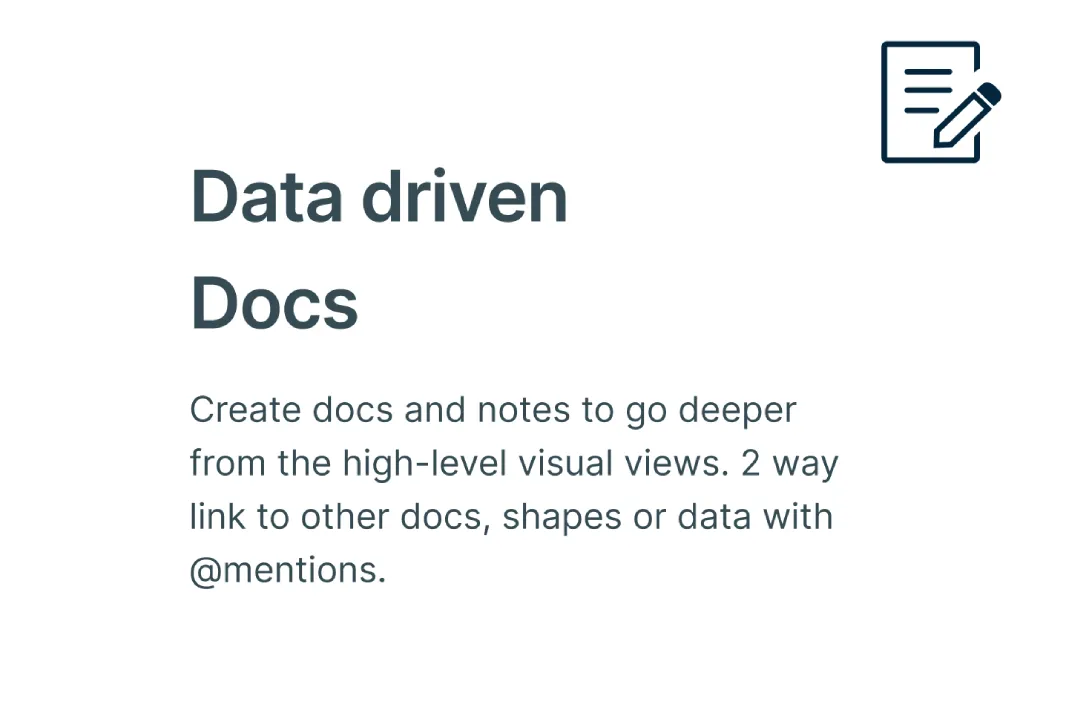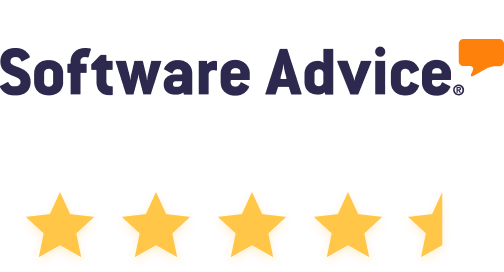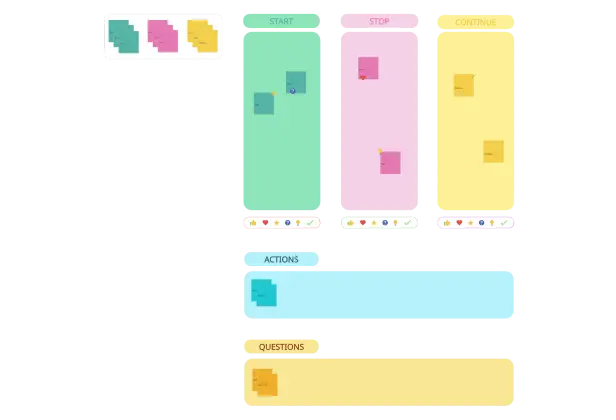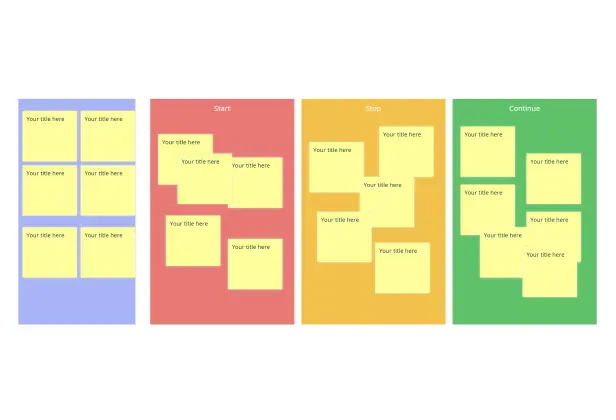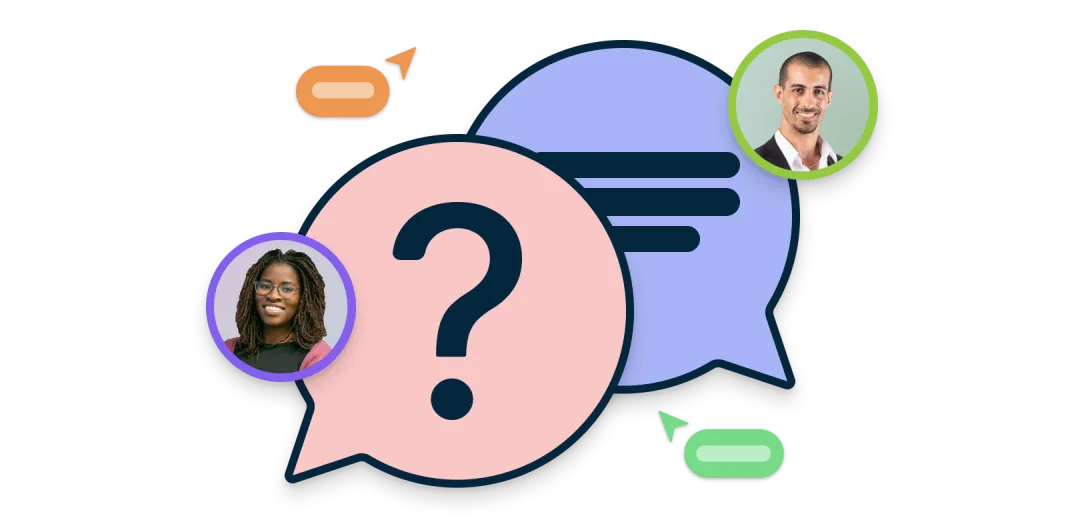Start Stop Continue Template
Start, Stop & Continue Retrospectives for Better Sprint Planning
Easily organize feedback, prioritize actions, and collaborate visually to improve team performance and decision-making with the start stop continue template.
- Host meetings, capture feedback, and assign follow-up actions
- Keep discussions focused with a visual framework that’s easy to understand
- Works for teams of any size—remote, hybrid, or in-person

Over 10 Million people and 1000s of teams already use Creately

AI Retrospective Generator
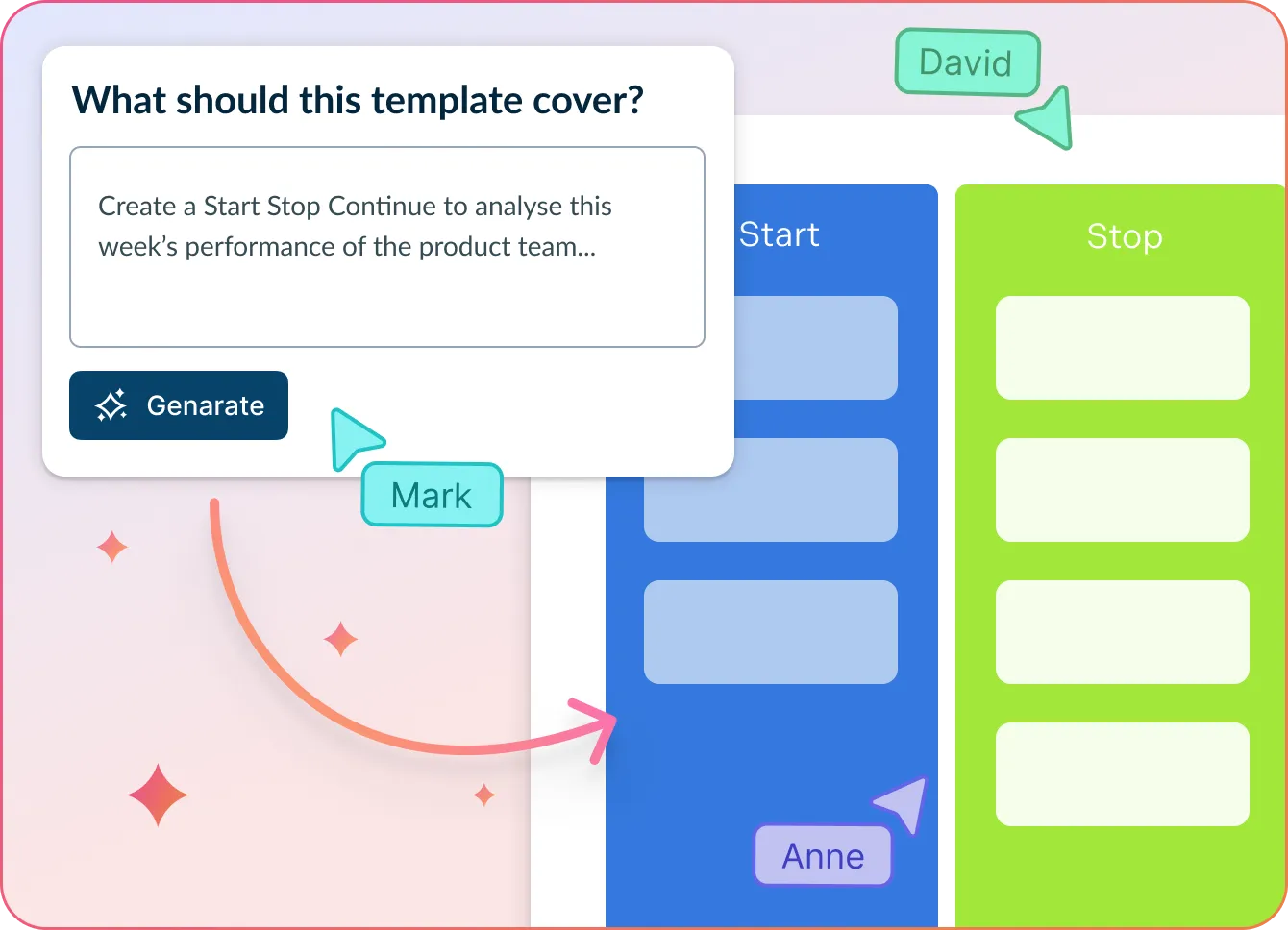
Run better retros with smart insights and zero prep
- Describe your sprint, project, or team goals.
- Click Generate with AI → watch Creately build a structured retro board with tailored prompts and categories.
- Capture ideas, group themes, and turn feedback into action—all in one visual space.
Why teams love Creately’s Retrospective Generator
 Instant setup – Get ready-to-use formats like sailboat, 4Ls, and mad-sad-glad, auto-filled by AI.
Instant setup – Get ready-to-use formats like sailboat, 4Ls, and mad-sad-glad, auto-filled by AI. Deeper insights – AI groups related inputs and highlights recurring patterns.
Deeper insights – AI groups related inputs and highlights recurring patterns. Private by default – All data stays securely in Creately—no third-party access.
Private by default – All data stays securely in Creately—no third-party access. Adaptable for every team – Works across languages, time zones, and agile frameworks.
Adaptable for every team – Works across languages, time zones, and agile frameworks. More engagement – Smart prompts guide contributions from every team member.
More engagement – Smart prompts guide contributions from every team member.
Evaluate Your Previous Sprint, Plan Ahead for the Next
Run Effective Retrospectives Effortlessly

Use the Start Stop Continue template to facilitate structured team discussions. With Creately, you can quickly set up your board, bring your team together, and focus on what matters most—what to start doing, stop doing, and continue doing. Start with the pre-built layout, then adapt it to your needs. Add sticky notes, categorize feedback with colors or tags, connect ideas using smart shapes and arrows, or embed supporting documents and links. Creately’s infinite canvas allows you to expand beyond the 3-column board into brainstorming zones, action planning, and more.


Collaborate in Real-Time or Asynchronously

Creately enables true team collaboration with live cursors, threaded discussions, and @mentions. Your team can contribute from anywhere—whether during a meeting or afterward—keeping feedback transparent, contextual, and actionable. The Start Stop Continue template integrates with your task boards and planning tools. Switch to a Kanban or table view to track progress, assign owners, and set due dates—right from the same workspace.
Built-in Templates and Powerful Visual Tools

No need to start from scratch. Choose from a ready-to-use collection of Start Stop Continue templates and visual elements tailored for retrospectives. From mood boards to action trackers, bring structure and creativity together in one space. Easily share your boards with team members or stakeholders, and switch to presentation mode to walk through feedback and action items clearly during meetings or reviews.

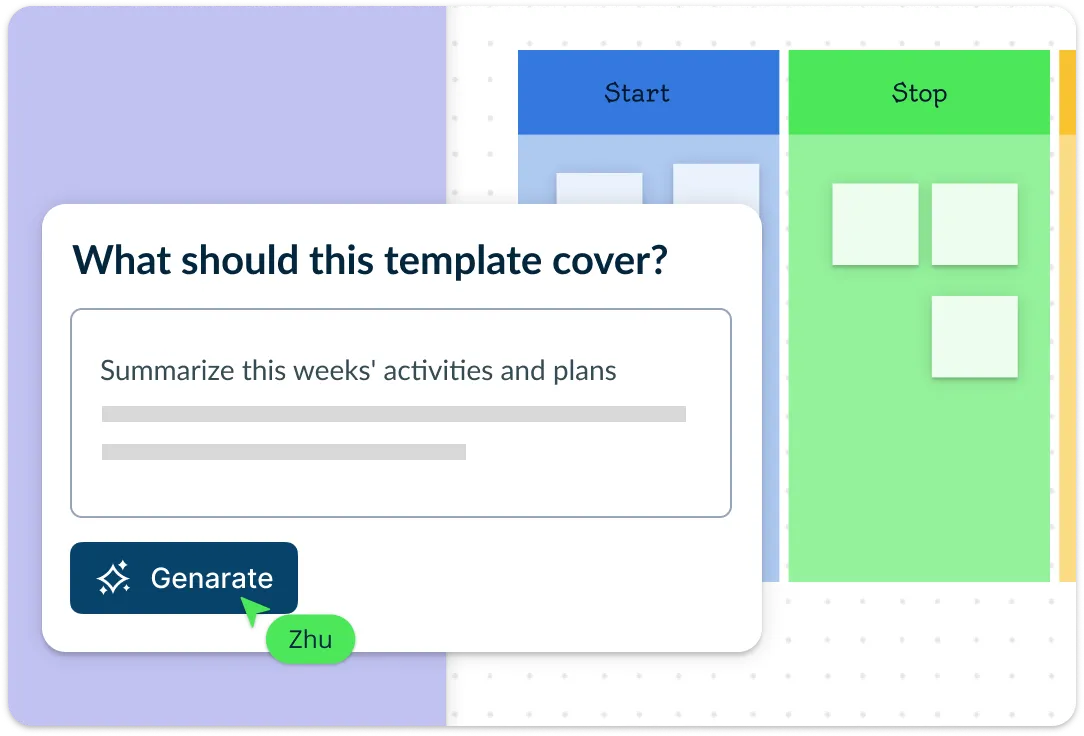
Supercharge Your Retrospective Insights with Creately AI

Creately AI helps you make sense of team feedback faster by automatically grouping similar ideas, summarizing key points, and even suggesting next steps based on discussion themes. Whether you’re running a quick check-in or a deep dive retrospective, AI speeds up the process and keeps the session focused. From organizing sticky notes into Start, Stop, and Continue columns to turning insights into action items, Creately AI adds an extra layer of intelligence to your workflows—so your team can move forward with clarity and confidence.
Why Use the Start Stop Continue Template?

The Elements of the Start Stop Continue Template
Start:
Identify and list down the activities and tasks that could improve your processes, reduce waste, and positively impact the way your team functions. These can include, technical behavior, and hand-off practices, and improved systems of communication.
Stop:
It’s important to identify and stop the activities that are wasteful, inefficient and have an overall negative impact. It can be styles of work, tools that are not working and other behavioral and technical constraints.
Continue:
What are the things you should keep doing? Building core processes are extremely important to efficiently running agile projects. In the continue section of the template, you can list down activities or behaviors that you’ve tried and should be implemented as a core process.
How to Use the Start Stop Continue Template to Run Retrospectives?
You can run effective retrospectives on the Creately canvas, by getting the whole team together and organizing items on the canvas to identify key areas to focus on.
Set clear goals:
Establish the goals of the retrospective and explain to team members how the session will be conducted. Establish the parameters clearly and emphasize that this is an exercise to generate consensus.List down team activities:
Use sticky notes to list down ideas and the tasks the team is involved in. Once written begin to group them into categories according to the start stop continue template. Add notes to each item for more details and have more in-depth discussions.Brainstorm and generate ideas:
Identify ideas and opportunities that your team is not currently involved in but could be of value if initiated.Use the AI-powered template to organize feedback:
Speed up your session with Creately’s AI-enhanced start stop continue template. Let AI auto-group similar feedback, highlight recurring themes, and suggest potential action items—so your team can focus on decision-making instead of sorting.Bring in other decision-making frameworks:
Extend the output of your decision tree to design a more complete course of action. Assess the impact of a decision using RICE frameworks, prioritize tasks using priority grids and create action plans all on the same canvas.Create a plan for implementation:
Once you reach a consensus, build a plan of action. This may involve things that are easily implementable like small behavioral changes or may need larger planning like building a roadmap.
Benefits of the Start Stop Continue Retrospective
Creates a structure for feedback:
The start-stop-continue template allows teams to have more open and productive conversations. They can share frustrations, exchange ideas, celebrate wins, and share constructive feedback.Foster new ideas:
This feedback system is both a retrospective and forward-looking framework. It encourages teams to continually share new ideas and fosters a continuous improvement mindset. It broadens thinking by identifying what’s been successful and what might work in the future.Encourages collaboration:
The activity is built to arrive at a consensus. It also provides a level of ownership to the team members that are most affected by the decisions in the retrospective, this promotes their desire to have their voices heard and influence the changes they want to see happen.
Take Your Retrospectives Further with These Smart Templates
FAQs About the Start Stop Continue Template
Can I customize the Start Stop Continue template in Creately?
Who can benefit from using a Start Stop Continue template?
Can I turn feedback from the Start Stop Continue template into tasks?
Is the Start Stop Continue template suitable for remote teams?
Can I turn feedback from the Start Stop Continue template into tasks?
Are there examples available for the Start Stop Continue template?











